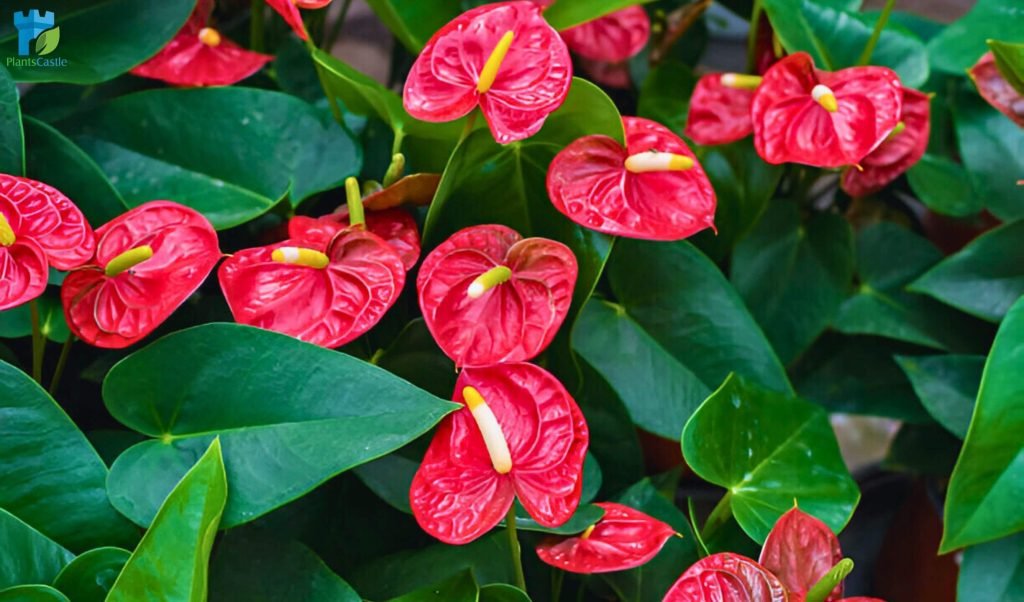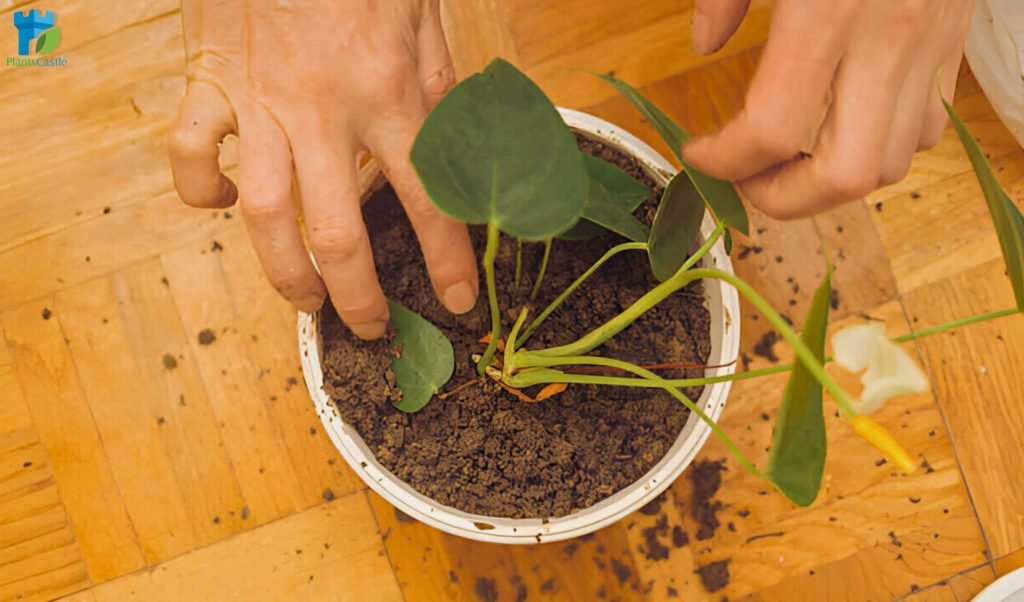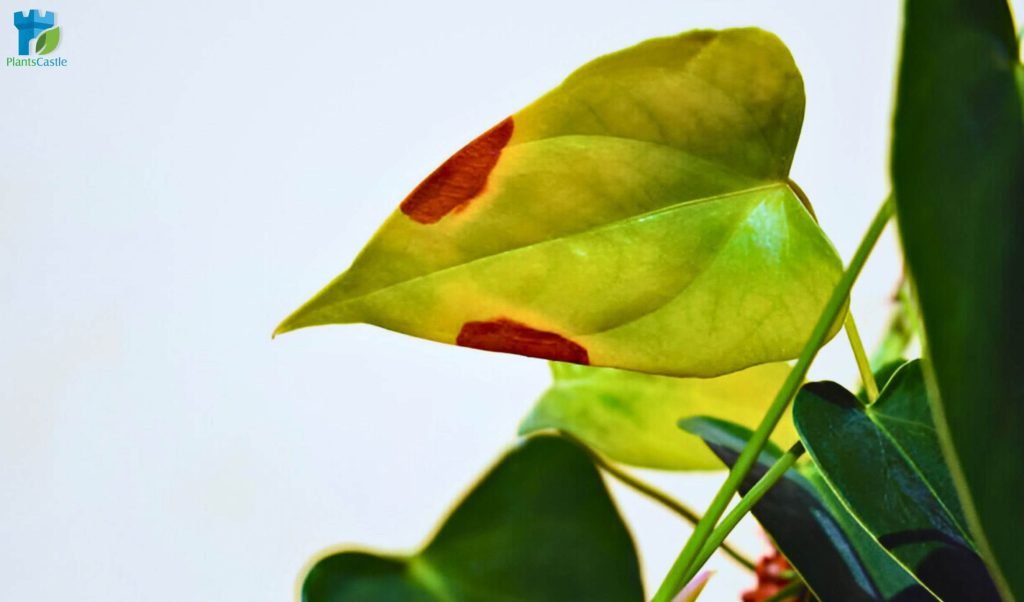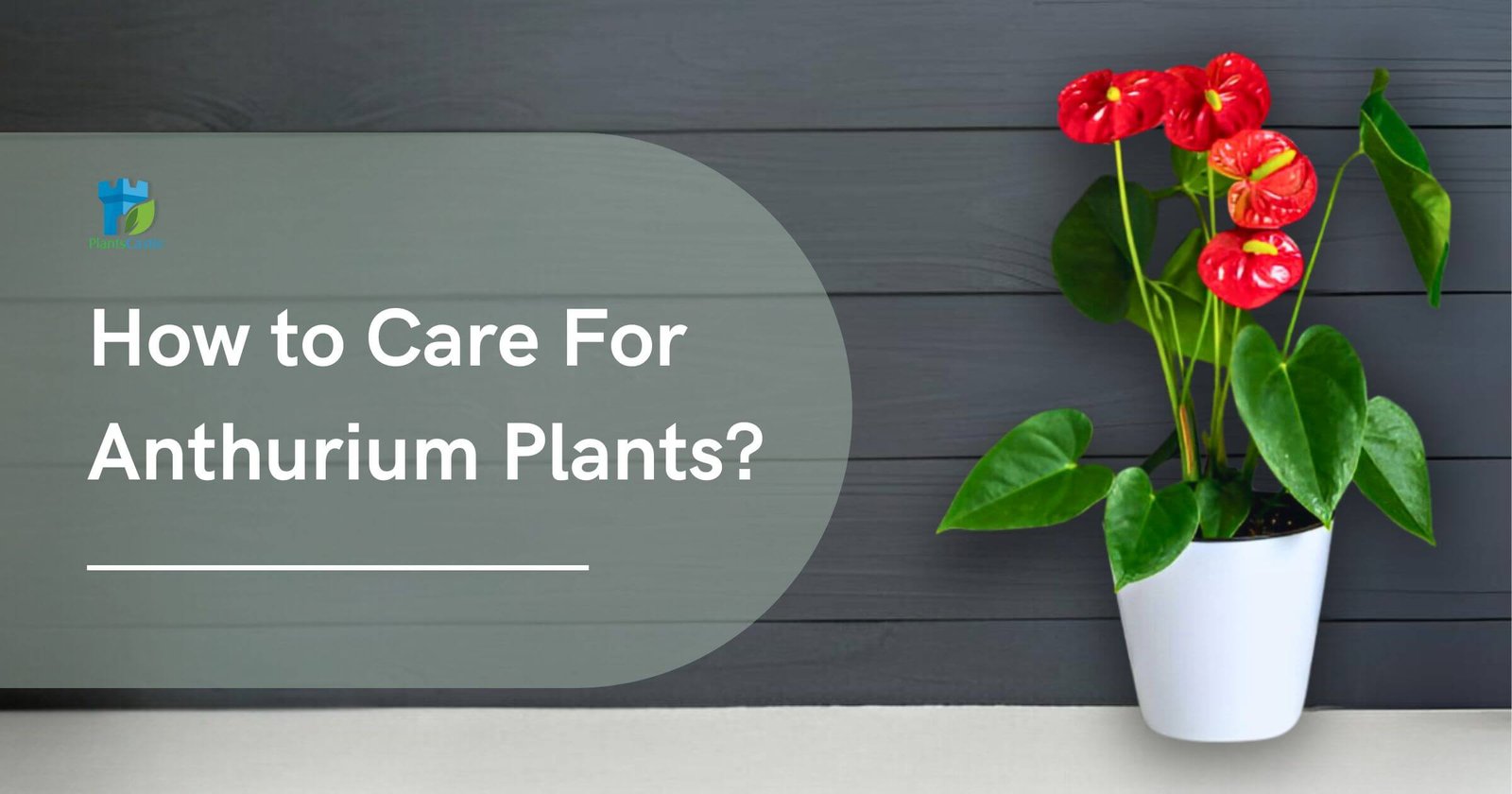Anthurium is ( also known as the Hawaiian love plant, and flamingo flower). They are long-lasting and brightly colored flowers that bloom in your house for months. You can give these charming and beautiful flowers as a gift to your friends and relatives.
Anthurium is the native plant of America and Northern South America. Some people who love plants want to know how to care for Anthurium plants? You can easily grow and care for Anthuriums to keep them happy and healthy, especially by maintaining them in greenhouses. The growth rate of Anthurium plants depends on ample light.
The anthurium’s open heart-shaped blossom represents hospitality while inspiring pleasure and prosperity. In this article, we’ll guide you on how to grow and care for Anthurium.
| Commonly Known As | Anthurium, tailflower, flamingo flower, laceleaf |
| Scientific Name | Anthurium spp. |
| Family | Araceae |
| Plant Category | Herbaceous, perennial |
| Mature Dimensions | Height: 12-18 inches, Width: 9 to 12 inches |
| Sunlight Needs | Partial sunlight |
| Soil Preference | Well-draining soil |
| Soil pH | Acidic |
| Flowering Season | Spring, summer, fall, winter |
| Flower Colors | Red, green, white |
| USDA Hardiness Zones | 11-12 |
| Native To | Central America, South America |
| Toxicity | Harmful to humans and pets |
How To Care For Anthurium Plants?

By this guide, you will completely understand the anthurium plant care. You’ll need to follow the steps that are essential for anthurium. In this post, we’ll guide you on how to give water to anthurium, its temperature, humidity preferences, and other help.
Light
Anthurium needs light but does not give direct light to the sun because it will burn off leaves. You should give them indirect light because it’s essential for leaves. If the medium light is not provided to plants, they will not grow properly. Keep the plants in this area where they get hours of sunlight daily.
Water
Water is an essential element in the life of anthurium. When you feel the top layer of soil dry, give the water. Watering plants every two to three days is possible. You should ensure the water drains from the pot after you water it, but avoid drowning the plant in it. Be careful not to overwater anthuriums since they might become sick from too much water.
Humidity
Dry air is not good for anthurium, especially in winter. You should keep the air around your plant humid, ideally around 80%. In fall or winter, you can increase humidity by using a humidifier or placing a tray of wet pebbles near the plant.
Temperature
Temperature is also a necessary part of Authurim. The average temperature is 65 to 75 for home.
Fertilizer
During the process of growing, fertilizing is important. You should give phosphorus every week. Fertilizers high in phosphorus will promote the flowering of your anthurium. The quantity is ¼ dilute is average for these flowers.
How To Grow Anthurium?

Successful anthurium growing necessitates consideration of several important aspects. Make sure you are in the appropriate setting first. Rich in organic content, well-draining soil is ideal for anthurium growth. The best combination is pine bark, perlite, and peat moss. Due to the risk of root rot, keep the soil regularly wet but not soggy for anthuriums.
Lighting is essential to the growth of Anthurium. It is best to place them close to a window that faces north or east, as they like strong, indirect light. As direct sunlight might burn their leaves, stay out of it.
Humidity and temperature are other crucial factors. Anthuriums prefer high humidity levels of 60–80% and temperatures of 65–80°F (18–27°C). You may spritz the leaves often to improve humidity, or you can set the plant on a pebble tray that has water in it.
Frequent trimming promotes new growth and helps keep Anthurium in its natural shape. To encourage bushiness, remove any dead or yellowing leaves and clip down lanky stems.
Finally, to change the soil and give the roots more room to flourish, repot your Anthurium every two to three years. To avoid waterlogging, choose a pot that is somewhat bigger than the existing one and make sure it has drainage holes. You may successfully cultivate Anthuriums and enjoy their stunning flowers for many years by following these tips.
How To Propagate Anthurium?
A clean container, fresh soil that drains well, and sanitized or sharpened pruning shears are required. Here’s how side shoots from anthuriums are propagated:
- A few hours before repotting, give the plant plenty of water.
- Remove the plant from its pot with care.
- Avoid damaging the roots by carefully separating the side shoots, or pups, from the main stem.
- Choose pots that are the right size and with soil that drains properly, like orchid bark. In the fresh pots, replant the side branches.
- Give the recently potted plants plenty of water, then set them in a somewhat shaded spot for a few days.
- To save the plants from stress, wait about two months before fertilizing.
Pruning
The process of Pruning plays a key role in the growth of Anthiums. Pruning is necessary for healthy plants. When you see yellow leaves, damaged leaves, or any dead plant, you should remove them by using sterilized pruning shears. Trim down overgrown stems to promote bushier growth by cutting just above a leaf node or junction.
Pruning can also be used to shape your plants at any time. Just remove what is required for upkeep and shape, leaving enough leaves to sustain the plant’s development. If you notice that your plant has only a few leaves that are also damaged don’t see them, remove them quickly because it will damage the whole plant.
Overwintering
Anthurium can’t live in cold temperatures. You should ensure their survival during the winter months, and move potted anthuriums indoors where they will receive enough sunshine, preferably near a south-facing window.
Maintain a steady temperature of 65-80°F (18-27°C) throughout the day and somewhat colder at night, avoiding drafts and heaters. Your plant will be happy if it is near a sunny window that is 75°F or warmer and has high humidity. A restroom is the ideal setting.
Diseases And Pests
Anthuriums may have problems such as fungal infections creating leaf spots, and root rot from overwatering. Bacterial blight that results in dark patches and drooping. If you’ve grown your plants at home, there are minimal chances of disease and pets which include aphids, mealybugs, and spider mites.
You should follow some instructions to protect them, avoid overwatering, ensure good airflow, and treat pests with soap or oil sprays. You should regularly check to help catch problems early. This way will keep your anthuriums healthy and happy.
How To Get Anthurium To Bloom?
You can promote blooming, anthuriums require bright, indirect light, temperatures between 65 and 80 degrees Fahrenheit (18 and 27 degrees Celsius), and regular but moderate watering. During the growth season, fertilize every four to six weeks and make sure the soil drains well. Your anthuriums will repay you with colorful, long-lasting blooms if you give them the right care.
Appearance and Fragrance of Anthurium
Anthurium flowers, often known as spathes, are stunning botanical beauties. These modified leaves decorate solitary spikes that grow from a central stem, each with a thin pencil-like structure in the center that contains small white, red, or yellow flowers. While most spathes are red, they also exist in white, pink, purple, and bicolor varieties. They have heart-shaped, waxy textures; some have a delicately crinkled look.
While not all anthuriums have fragrances, some have a variety of odors, from fruity and sweet to less appealing. Even with their diverse scents, anthuriums enchant with their beautiful hues and distinctive forms, bringing beauty and refinement to any area.
Common Problems With Anthurium
There may be several issues that can affect the health and growth of anthurium.
Leaf Spot
Fungal infections can cause black patches with yellow halos that appear on leaves. You should improve air circulation and minimize overhead watering to prevent leaf spots.
Yellowing Leaves

The yellowing of anthurium leaves can be caused by excessive exposure to sunshine. Brown and bleached tips are other signs of excessive light. Relocate the plant to a little larger distance from the window. Bacterial wilt can also cause yellowing of the leaves.
Flowering Issues
If you do not care and provide light to plants, there may be following issues. To promote flowering, make sure they receive adequate hydration, fertilizing, and bright, indirect light.
FAQs
How quickly is anthurium growing?
The growth process of anthurium is slow and it depends on factors of caring like temperature, water, and humidity. They tall a few inches every year.
Is anthurium a suitable houseplant?
Indeed, anthurium is a suitable choice for houseplants like greenhouses. They are vibrant foliage and long-lasting bloom. It may flourish inside with the right care, enhancing the beauty and grace of any living area.
How often should I water my anthurium?
Anthuriums want their soil to be regularly damp, but not muddy. You should give water 2 to 3 days in a week.
Can I fertilize my anthurium during the winter months?
Generally, as anthuriums grow more slowly in the winter, fertilizing should be decreased or stopped at this time. Resuming fertilization in the spring will encourage blossoming and new growth.
What should I do if my anthurium leaves start turning yellow?
If your anthurium leaves look yellowish, you should prune the yellow leaves. B because the yellow leaves will damage the whole plant.
Conclusion
In conclusion, by reading this post “How to care for Anthurium plants” you’ll be able to care for them and make them healthy and happy. You need to follow some essential points of care like watering, temperature, and humidity. All anthuriums may survive for around five years inside with the right care, but they do require high humidity and warmth to flourish. However, by following our advice, you may multiply your plant and produce healthy anthuriums for an endless amount of time. With the propagation, you can also keep the flowers and leaves of anthuriums healthy.

